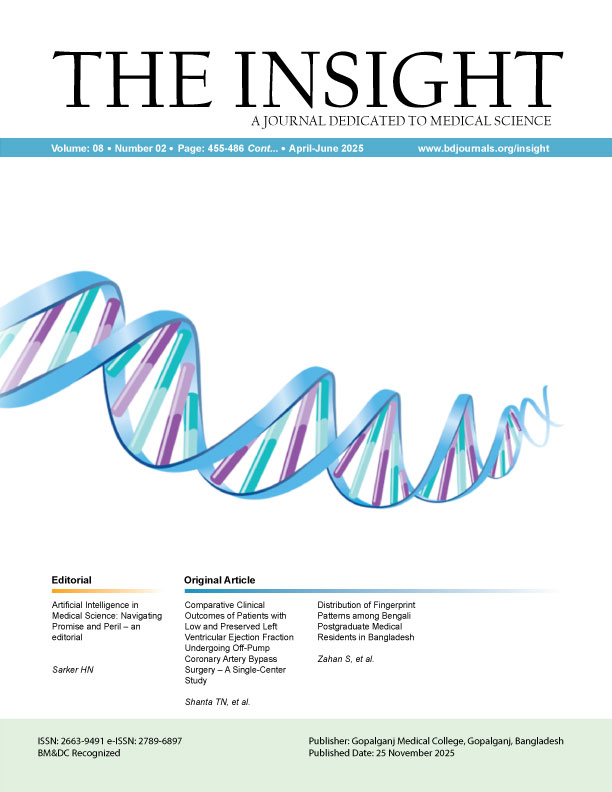Abstract
Background: Fingerprints serve as unique, permanent, and reliable biometric identifiers that remain unchanged throughout life. Dermatoglyphic studies have gained increasing interest for their potential applications in forensic and anthropological sciences. However, such data are limited among Bangladeshi populations, especially in medical professionals. Objective: To determine the distribution of fingerprint patterns among Bangladeshi postgraduate medical residents and to assess the association with sex. Methods & Materials: This cross-sectional study was conducted at the Department of Forensic Medicine, Bangabandhu Sheikh Mujib Medical University (BSMMU), from February 2024 to January 2025. A total of 115 postgraduate medical residents (1150) were included through convenient sampling. Fingerprints were collected using the rolling ink method and classified into arches, loops, and whorls. Data were analyzed using SPSS version 26. The Chi-square (χ²) test was applied to assess the association between fingerprint patterns and sex, with a significance level set at p < 0.05. Results: Loops were the most prevalent fingerprint pattern (62.5%), followed by whorls (29.1%) and arches (8.4%). Female participants exhibited a higher proportion of loop patterns than males, though the difference was not statistically significant (χ² = 1.409, p = 0.494). Finger-wise analysis showed loops were most frequent on middle and little fingers, while whorls predominated on ring digit. Conclusion: Loop patterns predominated among Bangladeshi postgraduate medical residents, with no significant sex-based differences. These findings provide baseline dermatoglyphic data for Bangladeshi adults and highlight the need for broader population-based research to explore potential genetic and biological influences.

This work is licensed under a Creative Commons Attribution 4.0 International License.
Copyright (c) 2025 The Insight





 PDF
PDF